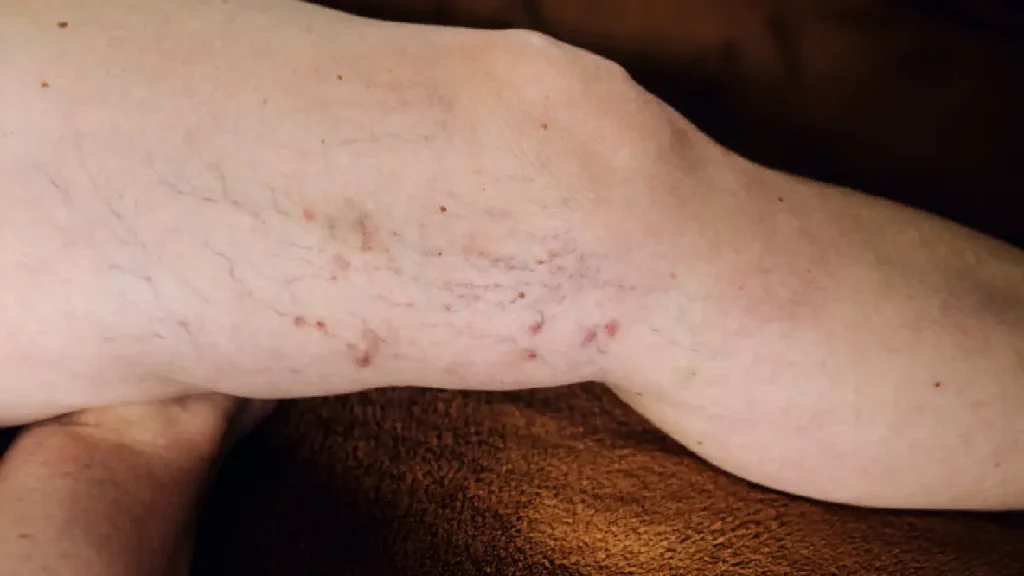Introduction to Vein Treatments
When you first step into a Vein Treatment Clinic, you might wonder what’s in store for you. This journey starts with understanding your veins and how they’re supposed to work. Simply put, veins are the highways your blood uses to travel back to your heart. Sometimes, they face issues like blockages or weakening, which can cause pain, swelling, or visible changes. Comprehensive vein treatment aims to tackle these problems head-on. It’s not just a single treatment or a one-time visit. Instead, think of it as an ongoing partnership between you and your healthcare provider, focusing on keeping your veins in the best shape possible. This can range from simple lifestyle changes and medications to more advanced treatments like surgeries. So, stepping into your first appointment, be ready to start a journey toward healthier veins. It’s all about getting to the root of the vein issues and finding the best way to manage or fix them, ensuring you can live your life without the discomfort or appearance of problematic veins slowing you down.

Preparing for Your First Vein Treatment Appointment
Getting ready for your first vein treatment visit is straightforward. Wear loose, comfy clothes so your doctor can easily check any areas of concern without your outfit getting in the way. In addition, it’s wise to write down any symptoms you’ve been having, like pain or swelling, and how long they’ve been happening. This info helps your doctor understand your situation better. List any medications you’re taking, too, as these can affect your treatment options. Drinking plenty of water before your appointment is good practice, but avoid using lotions or creams on the day of your visit, as they might interfere with ultrasound exams or similar tests. Remember, this appointment is about getting to know your veins better and setting the course for healthier legs. So, keep a positive mindset, and don’t hesitate to ask questions to clear any doubts.
What to Bring to Your Vein Treatment Visit
For your first vein treatment visit, pack light but smart. Bring your government-issued ID and insurance card; you’ll need these for registration. Also, carry your medical history and any recent test results related to your vein health. If you’re on medications, note them down or bring them along. This info helps your doctor understand your background for better care. Don’t forget a list of questions or concerns you have. It’s your time; make the most of it. Comfortable clothing is a plus, especially something that allows easy access to the areas you’re concerned about. Remember, you’re there for clarity and solutions, so these essentials will ensure you’re prepped and ready.
The Initial Consultation: Questions and Assessments
The focus of the first appointment is on understanding your specific needs and health history. The doctor will ask you several questions about your symptoms, lifestyle, and any previous treatments you might have had. It’s like piecing together a puzzle; every bit of information helps to see the full picture. They might ask about things like pain levels, any swelling, changes in the skin, and how these issues affect your daily life.
After the talk, comes the assessment part. This isn’t just a chat; the doctor will also check your veins. They might look at them, feel them, and possibly use a handheld device to see how well your blood is moving. It’s thorough but not something to worry about; consider it a fact-finding mission.
Think of this appointment as your roadmap to better vein health. The goal is to figure out what’s going on and how best to treat it. It’s straight to the point, but every question and every test has a purpose. You’re in good hands, and this is the first step towards solving those vein troubles.
Types of Tests and Examinations in Vein treatment
During your first vein treatment visit, expect a few key tests and exams to map out your vein health precisely. First off, you might undergo an Ultrasound Examination. This isn’t the kind where they look at babies, but rather a high-tech way to see your veins and how blood moves through them. It’s painless and gives your doctor a live view of what’s happening. Then there’s the Clinical Examination. This is your basic, hands-on checkup where the doctor looks at your legs, checks for swelling, and assesses any visible vein issues. Sometimes, they might use a Venous Refill Time test, which involves pressing on your veins and seeing how quickly they fill back up.
These exams aim to get a full picture of your vein health. Based on what they find, they can suggest the best way to treat any problems. It’s straightforward and usually pretty quick, so there’s nothing to worry about.
Discussing Your Symptoms and Vein Health History
When you walk into your first vein treatment appointment, expect to kick things off by talking about what’s been bothering you. The doctor wants to hear about your symptoms. Whether it’s pain, swelling, visible veins that don’t look right, or something else, tell them everything. They’re there to help, after all. Along with symptoms, your vein health history is up for discussion. This includes any past treatments you’ve had, what worked, what didn’t, and any family history of vein issues. Don’t worry if you can’t remember every detail. The important part is to give the doctor a clear picture so they can figure out the best way to help you. This chat sets the stage for everything that comes next, so be open and honest.
Vein treatment Options
At Vein Doctort, you have several treatment choices, each fitting different needs and issues. Let’s walk through some common options. Sclerotherapy, a popular method, involves injecting a solution directly into the vein, causing it to scar and directing blood to healthier veins. The treated vein eventually fades.
For laser treatments, a strong burst of light is sent into the vein, making it slowly disappear and fade. No cuts or needles are used here.
More advanced cases might need endovenous thermal ablation. This technique uses heat to close off bothersome veins. A thin tube, or catheter, is inserted into the vein, and heat is applied as the catheter is pulled through.
Setting Expectations: Immediate Steps and Long-term Plans
At your first vein treatment appointment, the journey starts with a detailed chat with your doctor. They’ll ask about your symptoms, health history, and any specific concerns you have. It’s straightforward – you talk, they listen. Next comes the physical exam. The doc takes a look at the affected areas, assessing things like swelling and skin changes. No surprises here, just a thorough check-up.
After the chat and check-up, it’s usually time for some tests. These might include ultrasounds to get a good look at your veins and see what’s happening inside. It’s all non-invasive and pretty quick.
Then comes the talk about what’s next. This is where your doctor lays out the immediate steps – think treatments like sclerotherapy or laser therapy if needed. They’ll make it clear what each option involves, no jargon or complex language.
And it’s not just about the now. You’ll also hear about long-term plans to keep your veins healthy. This might include lifestyle changes, medication, or even tips on exercise that can help. It’s all about making sure you know what you’re up against and how to deal with it, both right away and down the road.
So, you walk in knowing what to expect and walk out with a clear plan. No mysteries, just a straightforward path to healthier veins.
After Your Appointment: Follow-ups and Home Care
After your appointment, the vein specialist might schedule follow-ups to check how well your treatment is working. It’s common to have a few visits to ensure everything is on track. These visits are crucial for your recovery and the success of the treatment. During these follow-ups, the specialist might use ultrasound to look at your veins, ensuring the procedure’s success and checking for any issues that need attention.
Home care is another critical part of your recovery. Depending on your treatment, the doctor might advise wearing compression stockings. These help keep pressure on your veins, reducing swelling and improving blood flow. It’s also essential to stay active; walking is especially beneficial. However, avoid heavy lifting or standing for long periods right after your treatment.
The success of your treatment partly depends on following these guidelines. So, take your doctor’s advice seriously and stick to the plan they’ve laid out for you. Not only will this help your recovery, but it can also prevent future vein problems.
Conclusion: Embracing the Journey to Better Vein Health
Starting your path to better vein health can feel like a daunting task. Yet, once you’ve taken that first step by scheduling a vein treatment appointment, you’re moving in the right direction. Remember, understanding and treating vein issues is a journey, not a sprint. It involves learning about your condition, exploring treatment options, and working with your vein doctor to create a tailored plan. Your first appointment is the foundation of this journey. You’ll gain valuable insights into your vein health and take the first steps towards improvement. Embrace this process with an open mind and a positive attitude. Your journey to better vein health is important, and while it may take time, the benefits of pursuing treatment are worth it. Improved vein health can lead to enhanced overall wellness, increased comfort, and a boost in your confidence. So, as you wrap up your first vein treatment appointment, carry with you the knowledge that you’re on a promising path. Looking after your veins is a crucial aspect of your health care puzzle, and you’ve just begun putting the pieces together.






